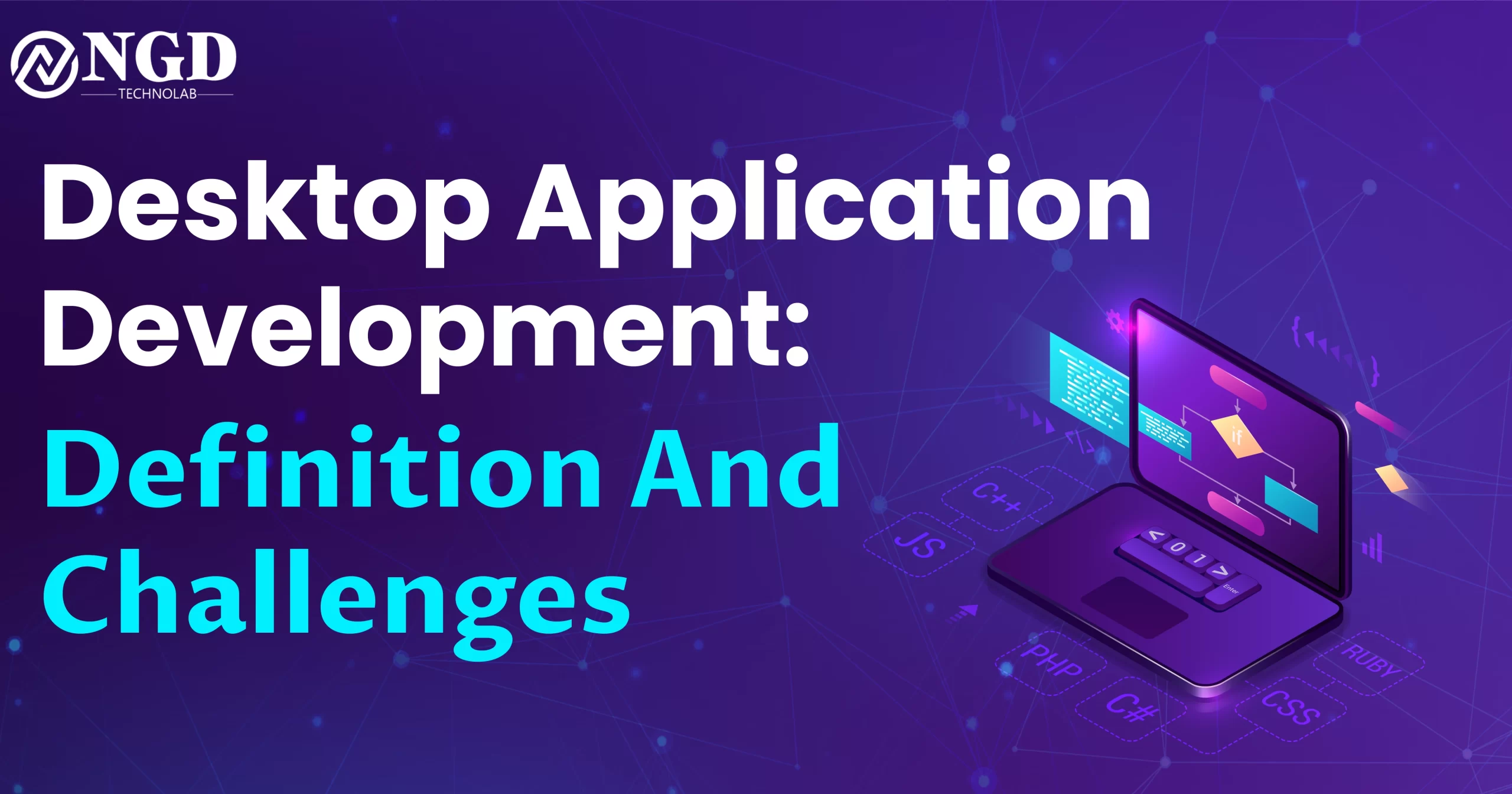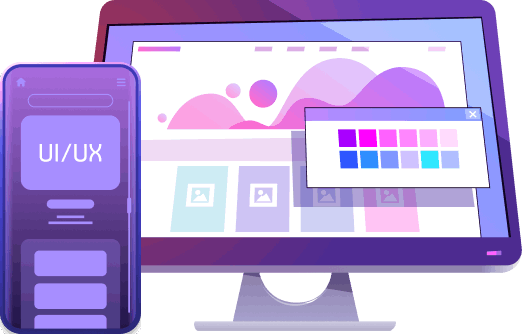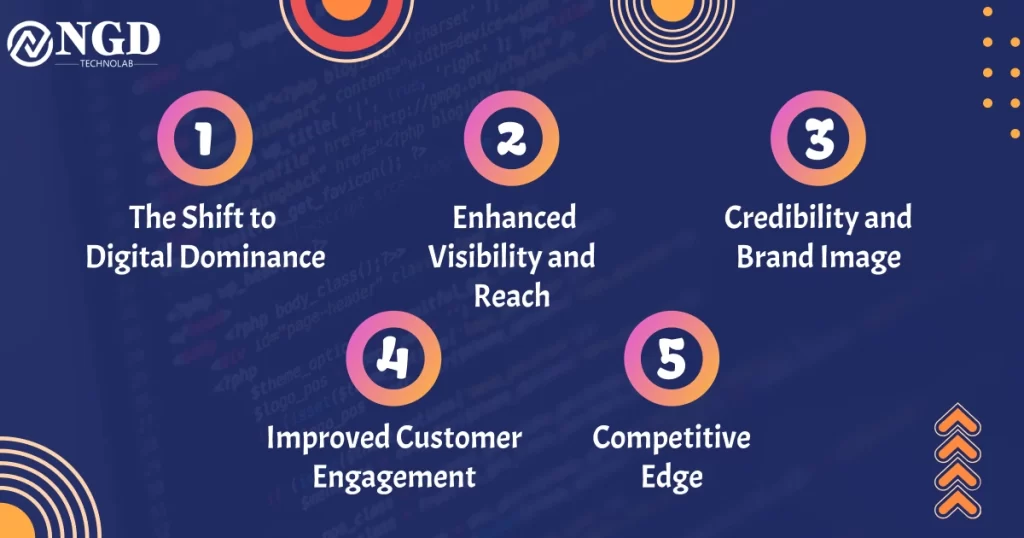Desktop Application Development: Meaning and Challenges
-
 Prashant Padmani
Prashant Padmani

Desktop applications play a vital role in modern technology. They enable businesses, professionals, and individuals to complete tasks efficiently and securely. Developing a desktop application requires understanding user needs, strong coding skills, and overcoming various development challenges.
This guide explores what desktop application development means, how it works, and the key challenges developers often face. Whether you’re a seasoned developer or just beginning your journey, this article will help you understand the desktop app development process in a clear and practical way.
1. What is Desktop Application Development?
1. What is Desktop Application Development?
Desktop application development is the process of building software programs that run directly on desktop or laptop computers. Unlike web applications that operate through browsers, desktop apps are installed locally on a device. They are designed for multiple purposes, including productivity tools, business software, and entertainment applications, offering fast performance and reliable offline access.
2. Main Components of a Desktop Application
A desktop application includes several essential parts that ensure smooth functionality and performance:
- User Interface (UI): The visual design and layout that users see and interact with.
- Backend Logic: The core code that handles data processing and powers the app’s operations.
- Data Storage: Manages saving and retrieving data, either locally or through cloud storage.
- API Integration: Connects the desktop app with external tools, systems, or services.
- Security Features: Protects sensitive user data and prevents unauthorized access or cyber threats.
3. Best Programming Languages for Desktop Applications
Choosing the right programming language is a key step in desktop application development. Below are some of the most popular and effective options:
- Java: Highly versatile and platform-independent, ideal for cross-platform desktop apps.
- C++: Offers powerful performance and full control over system resources.
- Python: Simple to learn, with extensive libraries that speed up development.
Each of these desktop app programming languages provides unique advantages depending on your project goals and application requirements.
4. Common Challenges in Desktop App Development
Ensuring that a desktop application runs smoothly across different operating systems and devices can be challenging. Developers must thoroughly test their software to prevent errors and maintain consistent performance.
4.2 User Experience (UX) and Design
A good UX design is essential for every desktop app. The interface should be clean, easy to navigate, and visually appealing to enhance user satisfaction and usability.
Since desktop applications often store sensitive data, strong security practices are vital. Developers should implement data encryption, secure login systems, and password protection to safeguard user information.
Ongoing software maintenance ensures long-term stability. Fixing bugs, improving performance, and adding new features help the application remain reliable and secure over time.
4.5 Optimizing Performance
High-performing apps deliver faster load times and smoother operations. Developers must optimize app performance by minimizing system resource usage and ensuring responsive functionality.
5. Best Practices for Building Desktop Apps
Follow these key tips to create a successful and reliable desktop application:
- Test Everything: Detect and fix bugs early for smooth performance.
- Use a Modular Approach: Build app parts separately for easy updates.
- Keep Improving: Update regularly using user feedback to enhance quality.
6. Examples of Popular Desktop Applications
Exploring successful desktop applications can offer great inspiration. Some of the most well-known and widely used apps include:
- Microsoft Office: A complete suite of tools for productivity and business tasks.
- Adobe Photoshop: A leading desktop app for photo editing and creative design.
AutoCAD: Professional software used by engineers and architects for 2D and 3D design.
7. Future of Desktop Applications
As technology advances, desktop applications continue to evolve with new innovations. Here are some key trends shaping the future of desktop app development:
- Cloud Integration: Seamless syncing across multiple devices through cloud-based apps.
- Artificial Intelligence (AI): Smarter features that personalize and enhance the user experience.
- Augmented Reality (AR): More immersive and interactive desktop software solutions.
Progressive Web Apps (PWAs): Blending web and desktop capabilities for improved performance.
Conclusion
Creating a desktop application is a rewarding journey that blends coding, design, and problem-solving skills. Developers must keep up with the latest technology trends and build apps that deliver real value to users. As innovation grows, desktop application development will continue to play a vital role in shaping the future of digital technology.
Frequently Asked Questions
It is a software program installed on a computer, unlike web apps that run in a browser.
Popular choices include Java, C++, and Python, depending on the project needs.
They test the app on different operating systems and make necessary adjustments.
A well-designed app is easier to use and keeps users satisfied.
They use encryption, authentication, and regular security updates to protect user data.
Get Free consultation and let us know about your custom web and Mobile App project idea

Over 13+ years of work experience, we have built 210+ web and mobile apps
We can help you with
- Dedicated Developer
- delivering high-quality development
- Custom Mobile App Development
- Innovative Solution For Startups and Enterprise
Latest Blogs
Explore the Latest Blogs on Trends and Technology.





